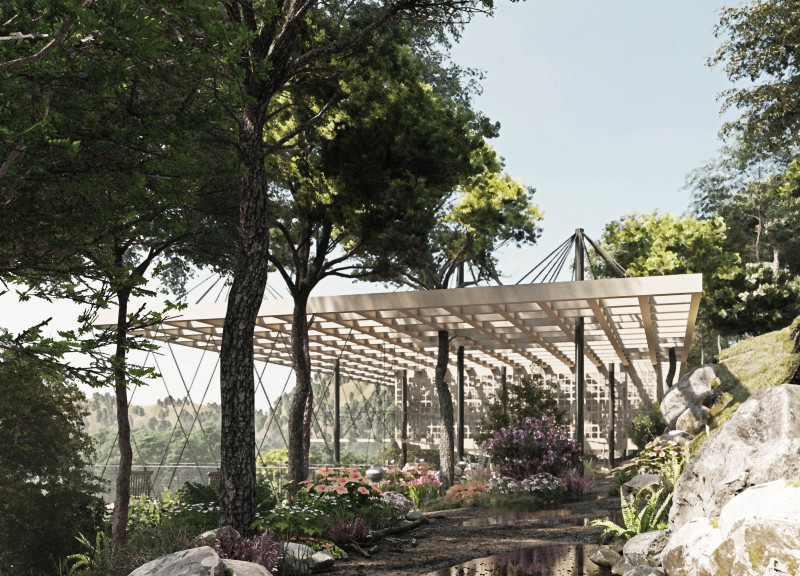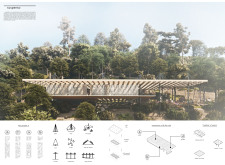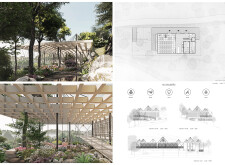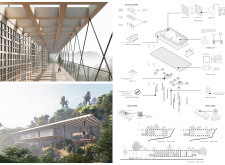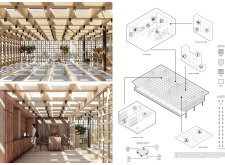5 key facts about this project
Set in the tranquil Vale de Moses area in Portugal, the design features a unique relationship between the built space and the surrounding landscape. The concept revolves around the idea of a suspended structure, likening it to a ship. This imagery creates a calm environment while fostering a deep connection with nature. The design promotes both retreat and engagement, allowing users to experience the landscape without disrupting its ecological harmony.
Design Concept
The central idea focuses on creating a suspended environment that feels detached from the ground yet connected to the site. This results in a space that serves as a refuge. The architecture encourages visitors to find peace within a context that supports emotional engagement with the landscape. The building's shape and positioning reflect this quest for a balance between separation and connection.
Spatial Relationship
The design emphasizes the importance of spatial relationships through its large openings. These openings allow natural light to flow inside and frame views of the landscape. By maximizing openness, the design creates a strong interaction between interior spaces and the exterior environment. The careful orientation of the building enhances the connection to the panoramic hillside, making users feel part of the surrounding scenery.
Sustainability Measures
A commitment to sustainability informs this design. The building incorporates effective ecological solutions, such as solar panels and systems for water management. These elements aim to lower environmental impact and preserve the existing ecosystem. The strategy prioritizes ecological integrity, allowing local plant life to thrive and ensuring the building exists harmoniously within its setting.
Materiality
The choice of materials reflects local traditions, specifically using cork and timber. These materials not only contribute to the aesthetic of the design, but also reinforce a connection to the region's architectural history. A modular approach is employed, facilitating efficient assembly and reducing waste during construction. This choice underscores a dedication to responsible practices while integrating naturally with the environment.
Shading techniques are also included in the design. These features help filter sunlight, creating comfortable interior conditions. By doing so, the spaces remain inviting, further enhancing the overall experience for occupants.


